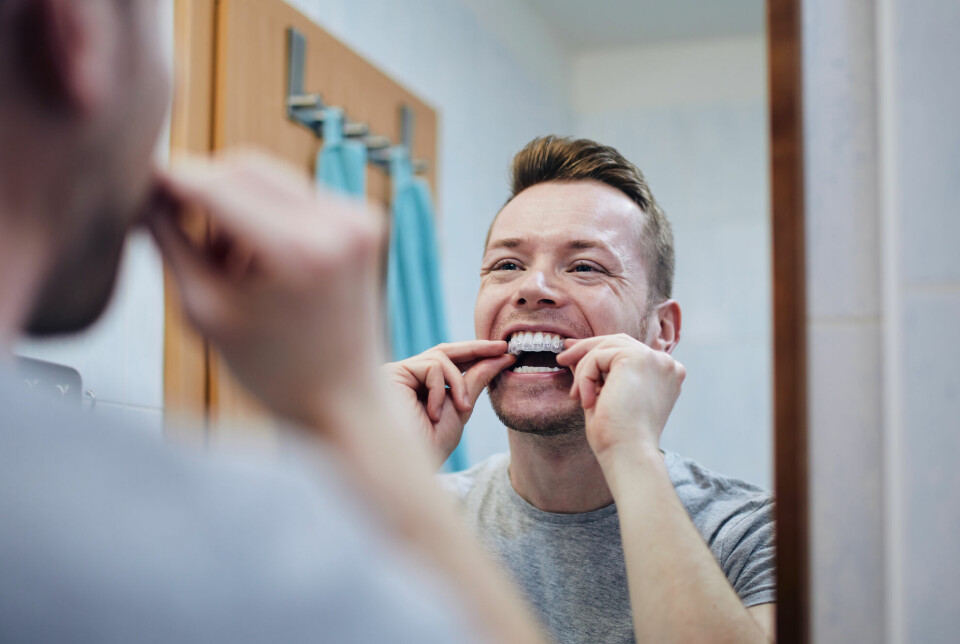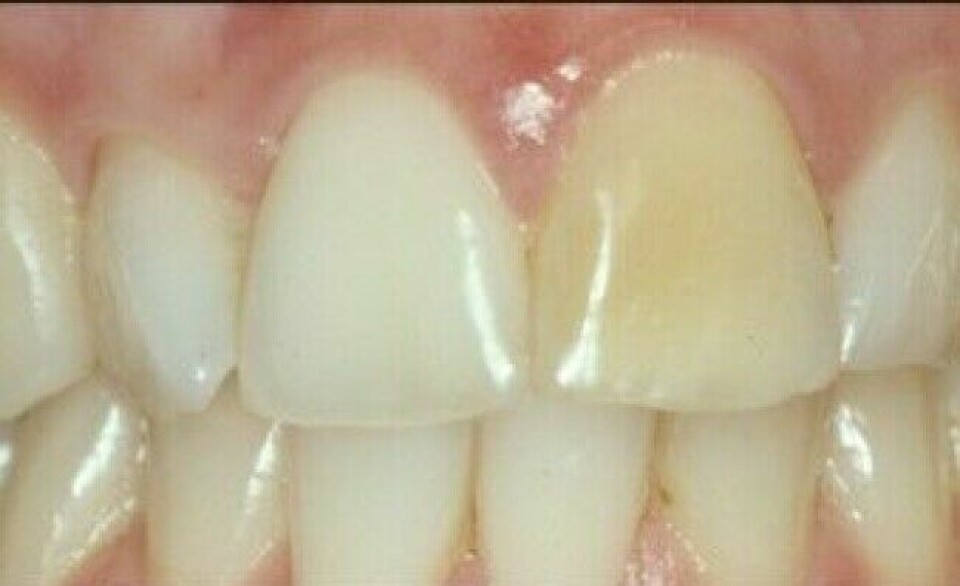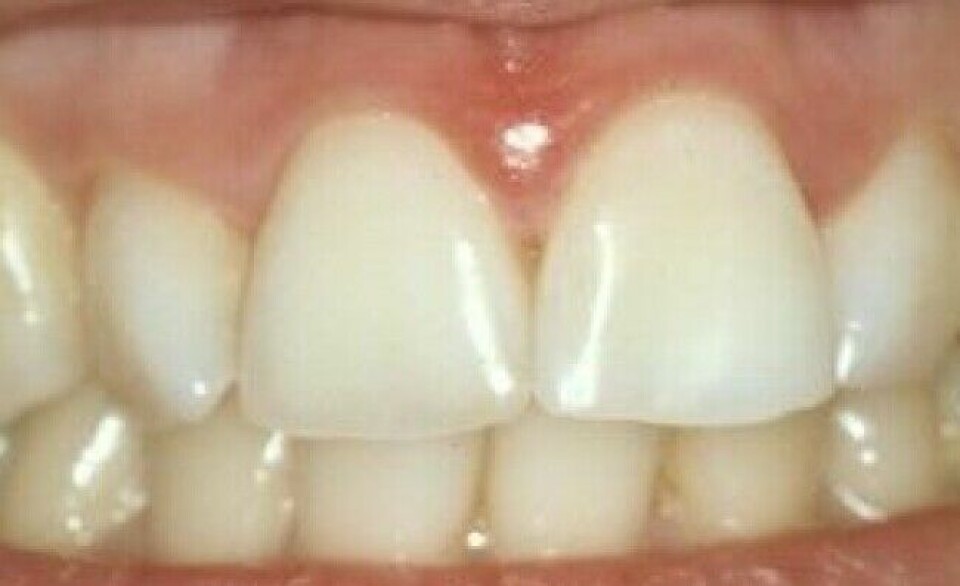
Is teeth whitening actually harmful?
“The whitening agent is acidic, so it is not something we recommend doing too often,” researcher Aida Mulic says.
Many people whiten their teeth. Some at the dentist, others get their own equipment and do it at home.
But is teeth whitening actually harmful?
Elderly people want whiter teeth – it is challenging
Line Bjerklund Pedersen is a dentist. She is also the head of the ethics council of the Norwegian Dental Association. She mentions that the treatment is mainly for cosmetic purposes and is unnecessary. More concerning is that it could potentially damage the enamel.
According to Pedersen, the teeth of older individuals are particularly more susceptible to damage.
Moreover, whitening teeth that change colour with age is challenging.
“It’s almost impossible. Every whitening will also fade. If you continue to whiten them, there’s a very high chance of damaging your teeth,” she says.
Pedersen says they can become more brittle and more easily stained by things like wine and coffee. The enamel can become porous and weakened.
Aida Mulic is a senior researcher at the Nordic Institute of Dental Materials (NIOM). She points out the same: Discolouration due to ageing is difficult to address.
Pedersen says that it is still mostly young people who want to whiten their teeth. It's not risk-free for them either.
Risk of teeth sensitivity
Mulic is clear that teeth whitening with modern methods and under controlled conditions at the dentist’s is gentle.
However:
“The whitening agent is acidic and not something we recommend using too often,” Mulic says.
Teeth whitening is a treatment. A treatment should always be carried out based on a diagnosis, according to dental ethics rules.
An important step is to find out if the patient benefits from the treatment. Often, this is only known once the treatment has started, she says.
Some patients experience side effects so severe that the treatment is discontinued.
“Some patients report sensitivity. It’s a reaction in the nerve. It’s not dangerous but feels unpleasant. It usually passes,” Mulic says.
Gentler than fillings and veneers
Many benefit from teeth whitening, Mulic asserts. By this, she means as a treatment for health reasons, not cosmetic.
“Teeth whitening is effective if there is a justified reason for undergoing the treatment,” she says.
There can be several reasons for discoloured teeth. Some patients have suffered damage to their teeth causing a greyish colour. Or there could be issues with the enamel development.
“In such cases, teeth whitening is a gentler method than fillings, crowns, laminates, and veneers,” she says.
Mulic believes more people should embrace the natural colour of healthy teeth.


Problematic that people can buy the equipment themselves
“There’s a lot out there on the market that’s not legal to buy or sell in Norway. Yet, patients still get hold of it,” Mulic says.
“It’s problematic that people can buy these products themselves. Patients order the equipment from cosmetics stores or online. We don’t have complete control over what’s being used out there.”
She says there’s a huge online market and assumes more people whiten their teeth themselves than at the dentist.
If you go to the dentist for teeth whitening, you get a custom-fitted tray. It’s filled with whitening gel and used according to the dentist's recommendations over a certain period of time.
The recommendations and the treatment are tailored to you.
The same is not true if you buy teeth whitening products in a cosmetic store.
Common to have chemical burn injuries
The agent used for whitening at the dentist has the concentration needed to achieve a whitening effect.
“The products available for purchase either have too low a concentration to be effective, or too high a concentration, and are illegal to buy or sell here,” Mulic says.
“The trays that often come with these kits are too spacious, not individually fitted. The whitening agent can spill onto the gums and cause chemical burns.”
Such chemical burns are unfortunately common, says Mulic. Dentists would very much prefer you to not use DIY whitening kits.
But is it easier said than done if the dentist refuses you treatment?
“It’s an ethical dilemma. This doesn't just apply to teeth whitening, but other issues as well,” Mulic says.
Some people have good, healthy teeth but still want to grind them down and put on veneers.
Pedersen argues that dentists should avoid offering teeth whitening services altogether, except when there is a health-related reason for doing so.
Possible to remove discolouration at the dentist, without whitening
“All food that has colourants, like coffee, tea, and blueberry jam, can cause discolouration,” Mulic says.
But this discolouration can often be polished away. It lies on the surface, she explains.
Often, visiting the dentist and getting your teeth polished with a dental polishing paste is sufficient.
However, you should be careful with using toothpastes containing a lot of abrasives over time, she continues.
Some have more sensitive enamel
"Max white products are designed to remove discolouration. You should not use only such products, as they contain more abrasive substances than regular toothpaste. You don't know how they affect your teeth over a long period of time,” she says.
This can also vary from person to person. Some have more sensitive enamel, which can become especially quickly worn down by the abrasives.
Mulic encourages us to think more about healthy teeth than white teeth. She offers a tip you may have heard before:
“To maintain teeth and prevent cavities, it’s important to brush twice a day with a toothpaste that contains fluoride.”
You can read more about why fluoride is so important in this article from earlier this year.
———
Translated by Alette Bjordal Gjellesvik
Read the Norwegian version of this article on forskning.no





































